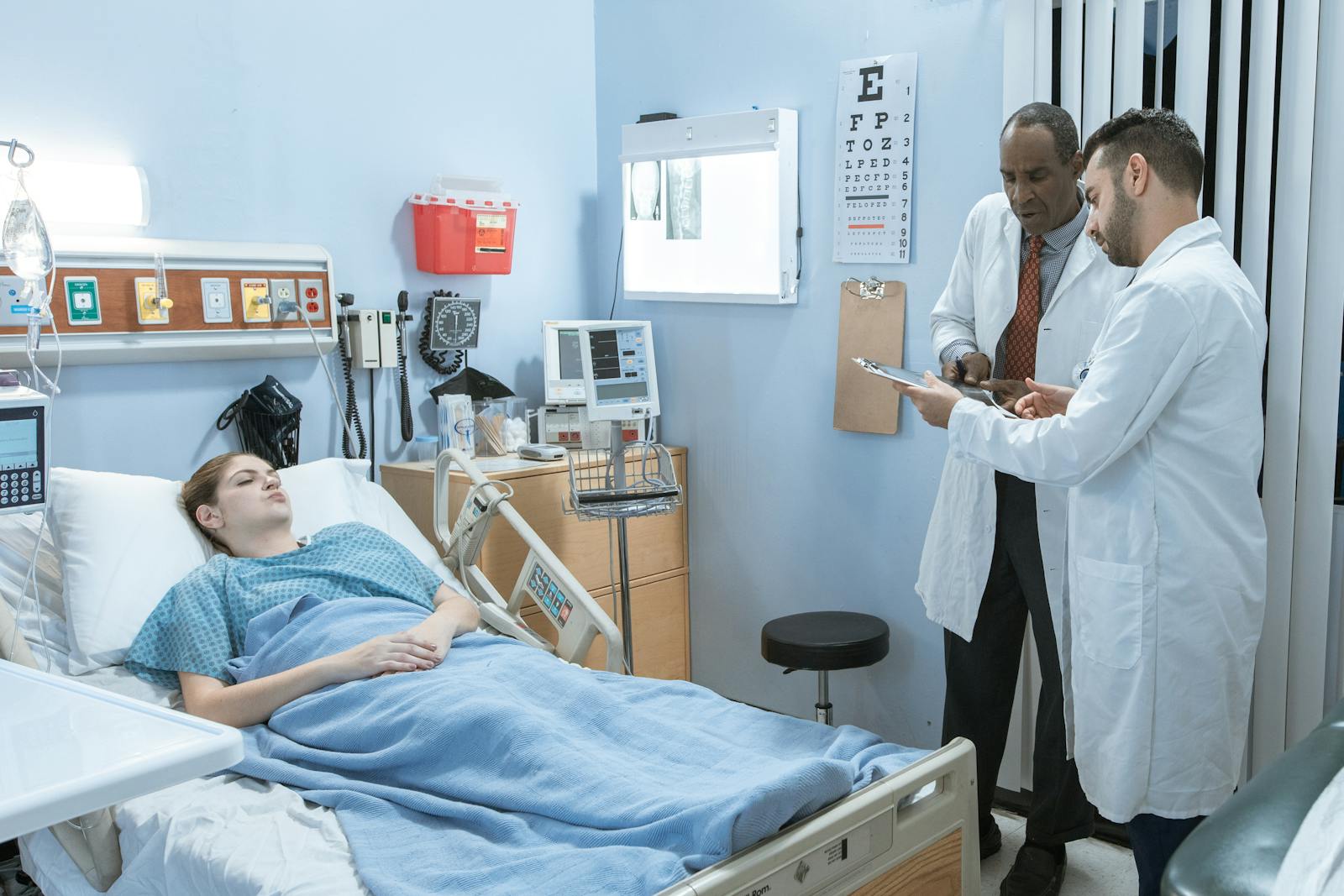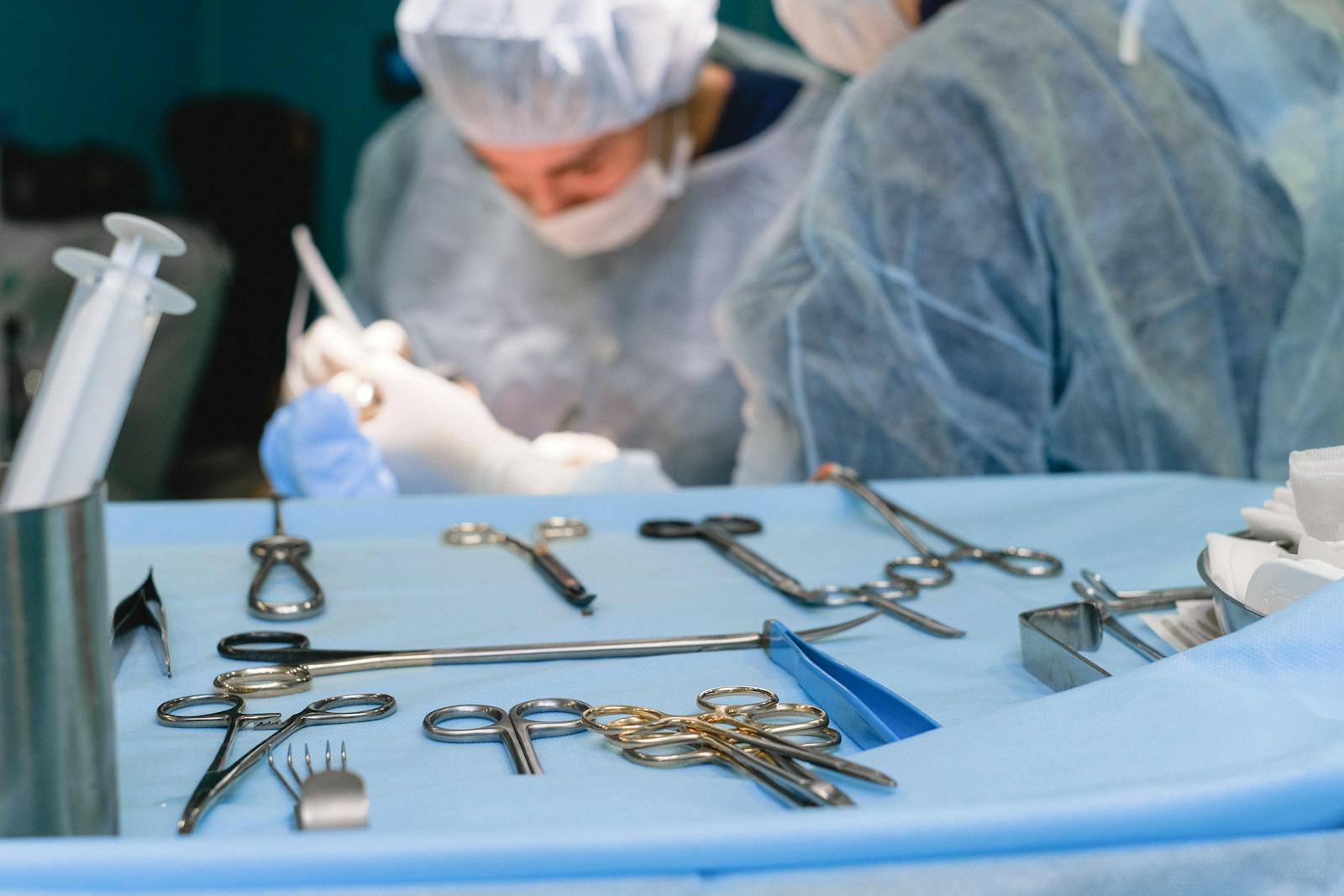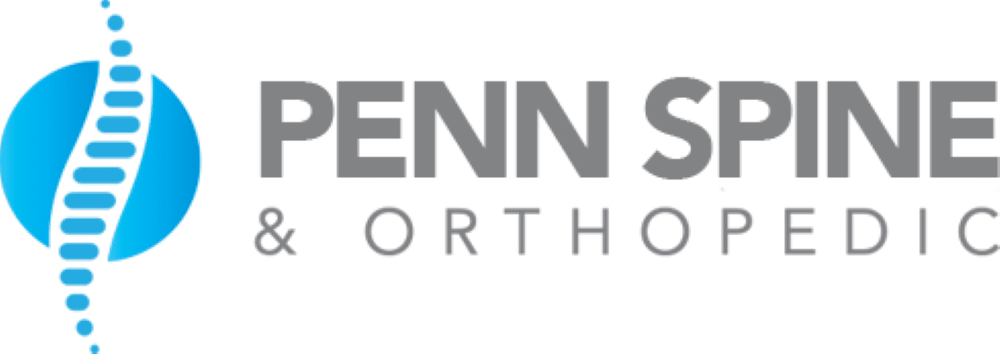As we explore the intricate world of spinal stenosis and the surgeons who specialize in its treatment, we uncover the complexities and advancements in managing this debilitating condition. These medical specialists, armed with extensive knowledge and adept surgical skills, bring to the forefront innovative approaches and solutions in alleviating pain and restoring function. Yet, there’s much to discuss about the multifaceted responsibilities of these surgeons, the evolving landscape of spinal stenosis treatment, and the pivotal role they play in patient care. This opens doors for a profound examination of their practice, and the significant impact they make in the medical field.
Understanding Spinal Stenosis
What exactly is spinal stenosis, you might ask? Spinal stenosis is a condition characterized by the narrowing of the spaces within your spine, which can put pressure on the nerves that travel through the spine. It most commonly occurs in the neck and lower back.
The condition is often caused by wear-and-tear changes in the spine related to osteoarthritis. In severe cases of spinal stenosis, doctors may recommend surgery to create additional space for the spinal cord or nerves.
However, stenosis prevention measures can help to delay or even prevent the onset of this condition. These measures consist primarily of lifestyle modifications that focus on maintaining the health and flexibility of the spine. Regular physical activity, maintaining a healthy weight, and avoiding tobacco and excessive alcohol are all vital components of these lifestyle modifications.
Additionally, maintaining good posture and practicing safe lifting techniques can also help to reduce the strain on the spine and keep it healthy. Finally, regular check-ups and early intervention at the first sign of back or neck pain can help to catch spinal stenosis in its early stages and prevent it from worsening.
Role of Spinal Stenosis Surgeons
Despite the significance of preventative measures, when spinal stenosis progresses to severe stages, the expertise of spinal stenosis surgeons becomes essential in managing the condition. Surgeons, with their advanced qualifications, play a pivotal role in providing high-quality care and treatment for this debilitating condition.
Surgeon qualifications are a critical factor in managing spinal stenosis. Surgeons must demonstrate proficiency in understanding spinal anatomy, accurately diagnosing the severity of spinal stenosis, and performing complex surgical procedures such as decompression surgery or spinal fusion. Additionally, their skills should extend beyond medical knowledge to include the ability to stay updated with the latest advancements in spinal treatments and technologies.
Equally important is the surgeon’s role in patient communication. Clear and empathetic communication enables surgeons to relay critical information about the condition, potential risks, and benefits of surgical intervention, and post-surgery recovery process. It also facilitates shared decision-making, where patients feel involved and informed about their treatment options. This essential interaction fosters trust, alleviates patient anxiety, and ultimately contributes to more positive treatment outcomes. Thus, the role of spinal stenosis surgeons extends beyond the operating room, encompassing both technical expertise and interpersonal skills.
Identifying Spinal Stenosis Symptoms
Before one can appreciate the pivotal role of spinal stenosis surgeons, it is important to understand the symptoms that characterize this condition, as early detection and intervention can greatly enhance patient outcomes. Spinal stenosis symptoms often start gradually and worsen over time. They can include numbness, weakness, cramping, or pain in the arms or legs. Some people may also experience problems with balance, frequent falling, or a heavy feeling in the legs.
Patients may also report pain when walking or standing, which often improves when they bend forward or sit down. This is due to the fact that these positions open up the spinal column, thereby relieving pressure on the spinal cord or nerve roots.
Lifestyle modifications such as regular exercise, maintaining a healthy weight, and cessation of smoking can help manage these symptoms and slow down the progression of the disease. Alternative therapies like acupuncture, massage, and yoga can also provide symptomatic relief.
Diagnostic Procedures for Spinal Stenosis
In diagnosing spinal stenosis, an array of procedures are employed by surgeons to accurately determine the condition. These range from a basic understanding of spinal stenosis diagnosis to the utilization of advanced imaging techniques. The evaluation of diagnostic results is then vital in devising an appropriate treatment plan for the patient.
Understanding Spinal Stenosis Diagnosis
To accurately diagnose spinal stenosis, physicians employ a variety of sophisticated procedures that meticulously examine the anatomy of the spine and the surrounding tissues. These diagnostic procedures have been designed to detect the narrowing of the spinal canal, a common cause of stenosis.
- Physical Examination: Doctors will often start with a thorough physical examination to identify any symptoms that might suggest spinal stenosis.
- Medical History Analysis: Detailed information on lifestyle adaptations and past medical conditions is essential to rule out other possible causes of the symptoms.
- Neurological Evaluation: This involves testing reflexes, muscle strength, and other neurological functions.
These steps are important to plan stenosis prevention measures and guide appropriate treatment. However, they are just initial measures – more advanced techniques are often required for a definitive diagnosis.
Imaging Techniques Used
Advanced diagnostic procedures incorporating imaging techniques serve as the linchpin in accurately diagnosing spinal stenosis and determining its severity. These imaging tools, such as MRI and CT scans, offer intricate details of the spinal canal and associated structures. However, concerns around radiation exposure from CT scans necessitate judicious use. As an alternative imaging method, MRI provides detailed images without radiation, but requires longer scan times and may be unsuitable for patients with certain implants or claustrophobia. Ultrasound is another alternative, offering real-time imaging without radiation risks. These techniques, coupled with clinical evaluation, empower spinal stenosis surgeons to diagnose accurately and plan for effective treatment, while minimizing potential harm to the patient.
Evaluating Diagnostic Results
Upon receiving the diagnostic results from the imaging techniques, spinal stenosis surgeons meticulously analyze the data to determine the extent of the stenosis and devise the best treatment plan. This process involves:
- Reviewing the images for diagnostic accuracy, ensuring that the results reflect the patient’s symptoms and medical history.
- Interpreting the results, discerning the severity and location of the stenosis. This result interpretation is crucial in forming a thorough understanding of the patient’s condition.
- Formulating a treatment plan based on these findings. This is tailored to each patient’s needs and takes into account factors such as the patient’s age, overall health, and personal circumstances.
In essence, an analytical, accurate, and all-encompassing review of diagnostic results is a key step in treating spinal stenosis.

Treatment Options for Spinal Stenosis
There are a variety of treatment methods that surgeons may employ when dealing with spinal stenosis. These options can be broadly categorized into surgical approaches and non-surgical treatments, each with its own set of benefits and drawbacks. A thorough understanding of these alternatives is essential in facilitating an informed decision-making process for both the medical practitioner and the patient.
Surgical Approaches
A variety of surgical options exist for the treatment of spinal stenosis, each offering a unique approach to alleviate the discomfort and restore mobility. Advances in surgical innovations have paved the way for more effective and less invasive solutions. These include:
- Decompression Laminectomy: This procedure involves the removal of the lamina, relieving pressure on the nerves.
- Laminotomy: Here, only a portion of the lamina is removed to reduce the impact on spinal structure.
- Spinal Fusion: This involves the fusion of vertebrae to limit movement and prevent further stenosis.
Each of these procedures has its own benefits and potential risks. As a result, the choice of treatment depends on the individual’s condition and overall health. These surgical procedures not only treat current symptoms but also contribute to stenosis prevention.
Non-Surgical Treatments
While surgical treatments can be effective, a substantial range of non-surgical options are also available for patients with spinal stenosis, aimed at managing symptoms and improving quality of life. Physiotherapy and pain management medications are common non-surgical treatments, often used in conjunction with lifestyle modifications. These can include regular exercise, maintaining a healthy weight, and quitting smoking. Additionally, alternative therapies such as acupuncture and chiropractic care have shown promise in alleviating symptoms. These non-surgical treatments, while not a cure, can greatly reduce pain and discomfort, and improve mobility. It’s essential for patients to discuss these options with their healthcare provider to determine the best treatment plan based on their specific condition and needs.
Common Surgical Procedures
Exploring the world of common surgical procedures, it’s important to understand that spinal stenosis surgeons often employ several meticulously designed techniques to alleviate the patient’s discomfort and improve their overall quality of life.
Medical advancements have greatly contributed to the enhancement of these procedures, leading to improved patient experiences. Typically, the choice of surgical procedure is determined by the severity of the condition, the patient’s health status, and the surgeon’s proficiency.
- Laminectomy: This involves removing the entire lamina to create more space for the nerves. It’s the most common surgical treatment for spinal stenosis and can dramatically improve the patient’s quality of life.
- Laminotomy: This procedure involves making a hole in the lamina to relieve pressure on the nerve roots. It is less invasive than laminectomy and typically has a shorter recovery period.
- Foraminotomy: This procedure enlarges the nerve root openings to alleviate nerve root compression. It’s often performed alongside a laminectomy or laminotomy.
These surgical interventions, thanks to medical advancements, have been refined over the years to guarantee higher success rates, less invasive procedures, and improved patient experiences. Despite the inherent risks associated with any surgical procedure, these techniques have proven to be effective in treating spinal stenosis.
Post-Surgery Care and Recovery
Following spinal stenosis surgery, an important phase of the healing process is post-surgery care and recovery. This phase encompasses managing pain in the aftermath of the procedure, along with a well-structured rehabilitation and exercise regimen. A thorough understanding of these elements is essential to expedite recovery and return patients to peak health.
Managing Pain Post-Surgery
In the aftermath of spinal stenosis surgery, effective management of post-operative pain forms an essential part of the recovery process. Several strategies can be employed for this critical phase, two of which are pain medication options and emotional coping strategies.
- Pain medication options: A range of medication options, from over-the-counter drugs to prescription pain relievers, may be used to manage post-operative pain. It’s vital to follow the surgeon’s instructions to avoid complications.
- Emotional coping strategies: These include relaxation techniques, mindfulness, and psychological support. Emotional well-being plays a significant role in pain perception.
- Consistent communication with healthcare providers: Regular updates about your pain levels will help your healthcare team adjust your pain management plan as needed, ensuring a smoother recovery.
Rehabilitation and Exercise Regimen
An essential component of post-surgery care and recovery for spinal stenosis patients is a well-structured rehabilitation program, which often includes a tailored exercise regimen. Exercise modifications are integral in this phase, as they guarantee the patient’s safety while maximizing the benefits of physical activity. These adjustments may involve the use of assistive devices or changes in exercise intensity and frequency. It’s vital to strike a balance between promoting mobility and preventing undue strain on the healing spine.
In conjunction with the exercise regimen, a rehabilitation diet plays a pivotal role in patient recovery. Adequate nutrition can expedite the healing process, reduce inflammation, and strengthen the body. A diet rich in protein, vitamins, and minerals becomes particularly important at this stage.
Risks and Complications of Surgery
While spinal stenosis surgery can provide significant relief to many patients, it is not without potential risks and complications, which may include infection, nerve damage, and issues related to anesthesia. The following are some of the common post-operative complications:
- Infection: Surgical site infections can occur post-operatively, leading to increased pain, fever, and sometimes requiring additional treatment.
- Nerve damage: During surgery, nerves may inadvertently be damaged or irritated, resulting in weakness, numbness, or even paralysis in extreme cases.
- Anesthesia-related complications: These may include reactions to medication, breathing problems, nausea, vomiting, and in rare cases, severe allergic reactions.
It is important to note that these risks must be weighed against the potential benefits of the surgery, as well as the potential risks of surgery alternatives. For example, non-surgical treatments such as physical therapy or pain management may not provide sufficient relief for some patients. As always, patient education is key, and a thorough discussion of all risks, benefits, and alternatives should be held with the surgeon prior to making a final decision regarding treatment.

Benefits of Surgical Intervention
Despite the potential risks associated with spinal stenosis surgery, the procedure’s benefits often outweigh these concerns, offering patients relief from debilitating pain and a notable improvement in their quality of life. Surgical advancements have made procedures more effective and less invasive, leading to faster recovery times, reduced postoperative pain, and lower chances of complications. The advent of minimally invasive techniques, for instance, has considerably decreased the length of hospital stays, thereby reducing the overall cost implications of such procedures.
Surgical intervention also provides a more definitive solution to spinal stenosis, as it directly addresses the physical abnormalities causing the condition, unlike non-surgical treatments that only manage symptoms. Additionally, success rates of spinal stenosis surgery are generally high, with a majority of patients experiencing substantial reductions in pain and improvements in mobility.
From an economic perspective, while the upfront costs of surgery might seem challenging, the long-term cost implications are more favorable. Considering the costs associated with ongoing non-surgical treatments, lost productivity due to disability, and the diminished quality of life, surgery often proves to be a cost-effective solution in the long run. Therefore, despite its potential risks, surgical intervention for spinal stenosis presents numerous benefits.
Selecting the Right Surgeon
Given the significant benefits of surgical intervention for spinal stenosis, it becomes essential to carefully consider the process of selecting the appropriate surgeon to guarantee the best results. The right surgeon can provide a safe procedure, with a high success rate and reduced risk of complications.
When selecting a surgeon, consider the following:
- Surgeon’s Expertise: It is vital to verify the surgeon’s credentials, ensuring their specialty in spinal stenosis surgery. This can be confirmed through their educational background, training, and years of practice in the field.
- Patient Testimonials: These provide valuable insights into the surgeon’s patient interactions, bedside manners, and overall satisfaction rates.
- Hospital Quality: Surgeons are typically affiliated with specific hospitals. Evaluate these hospitals’ performance, especially their success rates for spinal stenosis surgeries.
These steps will help you make an informed decision about the surgeon who will operate on you. Remember, the objective is not just to find a surgeon but to find the right surgeon for your specific case. This requires careful consideration of the surgeon’s expertise, patient testimonials, and the quality of the hospital where the surgery will be performed.
Real-Life Success Stories
Numerous real-life success stories underscore the transformative impact of spinal stenosis surgeries when conducted by experienced and skilled surgeons. Patient testimonials often reveal a dramatic improvement in the quality of life post-surgery, with many recounting a notable reduction in pain and the restoration of mobility.
Recovery timelines can vary significantly, influenced by factors such as the patient’s age, overall health, and the severity of the stenosis. However, a common theme across many success stories is the noticeable improvement within weeks of the surgery. One patient, for instance, was able to return to his physically demanding job within two months, highlighting the efficacy and rapid recovery associated with these procedures.
These testimonials not only provide hope to prospective patients but also emphasize the crucial role of the surgeon’s expertise. A meticulous surgical approach, combined with an individualized post-operative care plan, has been a recurring theme in these success stories.
Frequently Asked Questions
What Is the Average Cost of Spinal Stenosis Surgery?
The average cost of spinal stenosis surgery varies widely, often ranging from $15,000 to $50,000. Factors affecting cost include insurance coverage, geographic location, and the extent of post-surgery rehabilitation required.
Are There Any Lifestyle Changes That Can Help Manage Spinal Stenosis?
Yes, lifestyle changes including regular exercise and dietary modifications can help manage spinal stenosis. Exercise can strengthen back muscles, while a healthy diet aids in maintaining ideal weight, reducing strain on the spine.
How Long Does It Typically Take to Return to Normal Activities After Surgery?
The recovery period post surgery varies, typically ranging from weeks to months. Effective post surgery rehabilitation and pain management are vital to expedite return to normal activities, with individual timelines depending on personal health factors.
Are There Any Non-Surgical Alternatives for the Treatment of Spinal Stenosis?
Yes, there are non-surgical alternatives for the treatment of spinal stenosis. These include alternative therapies like physical therapy, acupuncture, and chiropractic adjustments, as well as pain management techniques such as medications and steroid injections.
Is There Any Genetic Predisposition to Spinal Stenosis?
Yes, a genetic predisposition to spinal stenosis can exist. Certain inherited conditions can contribute to stenosis development. Genetic testing and stenosis prevention strategies can help manage this predisposition effectively.

